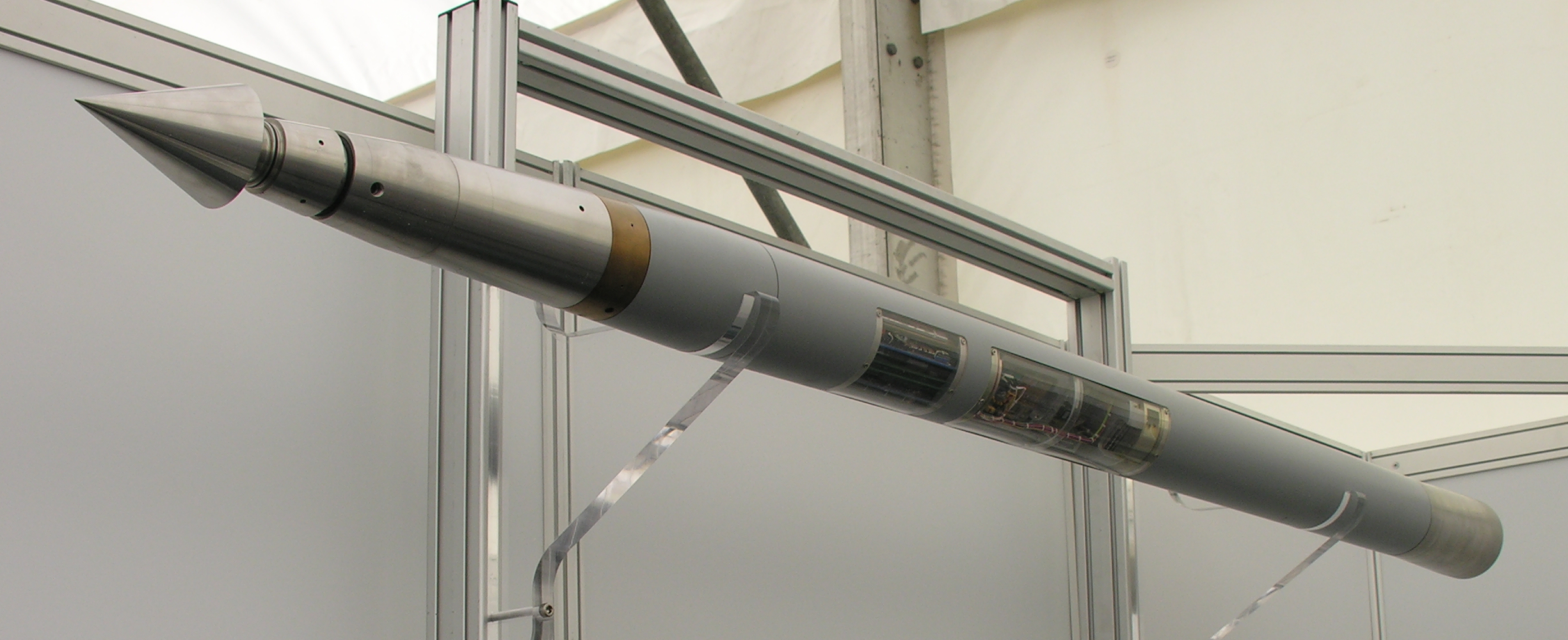Superkavitierender Unterwasserlaufkörper on:
[Wikipedia]
[Google]
[Amazon]
 The Superkavitierender Unterwasserlaufkörper (lit. ''Supercavitating Underwater Running Body,'' formerly known as Barracuda) was a German close-range
The Superkavitierender Unterwasserlaufkörper (lit. ''Supercavitating Underwater Running Body,'' formerly known as Barracuda) was a German close-range
 The Superkavitierender Unterwasserlaufkörper (lit. ''Supercavitating Underwater Running Body,'' formerly known as Barracuda) was a German close-range
The Superkavitierender Unterwasserlaufkörper (lit. ''Supercavitating Underwater Running Body,'' formerly known as Barracuda) was a German close-range supercavitating torpedo A supercavitating torpedo is a torpedo using the effect of supercavitation to create a bubble around the torpedo to move at high velocity under water. The following is a list of supercavitating torpedoes which have been developed or are in developme ...
technology demonstrator
A technology demonstration (or tech demo), also known as demonstrator model, is a prototype, rough example or an otherwise incomplete version of a conceivable product or future system, put together as proof of concept with the primary purpose of ...
designed by the Diehl BGT Defense and developed in cooperation with the German Navy
The German Navy (, ) is the navy of Germany and part of the unified ''Bundeswehr'' (Federal Defense), the German Armed Forces. The German Navy was originally known as the ''Bundesmarine'' (Federal Navy) from 1956 to 1995, when ''Deutsche Mari ...
. The supercavitating torpedo A supercavitating torpedo is a torpedo using the effect of supercavitation to create a bubble around the torpedo to move at high velocity under water. The following is a list of supercavitating torpedoes which have been developed or are in developme ...
for a "close-range defense of underwater targets" was presented to the public in 2005 as a prototype, but it never went into development and procurement.
This form of torpedo solves the problem of high underwater drag by means of the supercavitation
Supercavitation is the use of a cavitation bubble to reduce skin friction drag on a submerged object and enable high speeds. Applications include torpedoes and propellers, but in theory, the technique could be extended to an entire underwater v ...
effect, where underwater at a velocity of around 180 km/h a cavity filled with steam surrounds the moving object. Only the tip is in contact with the water, as such the frictional resistance is greatly reduced. The propulsion of such a torpedo can no longer be done by a propeller but requires a rocket engine
A rocket engine uses stored rocket propellants as the reaction mass for forming a high-speed propulsive jet of fluid, usually high-temperature gas. Rocket engines are reaction engines, producing thrust by ejecting mass rearward, in accordanc ...
.
To steer, this torpedo has a pivoting head segment. If the torpedo rises or falls, the water pressure
Pressure (symbol: ''p'' or ''P'') is the force applied perpendicular to the surface of an object per unit area over which that force is distributed. Gauge pressure (also spelled ''gage'' pressure)The preferred spelling varies by country and e ...
acting on it also changes, and the cavitation bubble changes. When sinking, the water pressure increases and the bubble is compressed; when the torpedo rises, the pressure drops and the bubble gets bigger. In order to keep the bubble intact with increasing water pressure, additional gas is pumped into the bladder.
According to the manufacturer, the torpedo reaches a speed of over 400 km/h underwater and is steerable. It is not dependent on the launch from submarine
A submarine (or sub) is a watercraft capable of independent operation underwater. It differs from a submersible, which has more limited underwater capability. The term is also sometimes used historically or colloquially to refer to remotely op ...
s but can dive into the water from the air and continue its supercavitation trip from there.
See also
*VA-111 Shkval
The VA-111 ''Shkval'' (from russian: шквал, ''squall'') torpedo and its descendants are supercavitating torpedoes originally developed by the Soviet Union. They are capable of speeds in excess of 200 Knot (unit), knots (370 km/h or 230 ...
— comparable Soviet torpedo from 1977.
* Hoot
Hoot may refer to:
Publications
* ''Hoot'' (novel), a young adult novel by Carl Hiaasen
* ''Hoot'', a 1996 children's novel by Jane Hissey
* ''Hoot'' (comics), a British magazine published from 1985 to 1986
* ''The Brandeis Hoot'', a student n ...
— Iranian model reverse-engineered
Reverse engineering (also known as backwards engineering or back engineering) is a process or method through which one attempts to understand through deductive reasoning how a previously made device, process, system, or piece of software accompli ...
from the Soviet Shkval.
References
{{DEFAULTSORT:Superkavitierender Unterwasserlaufkorper Torpedoes of Germany Supercavitating torpedoes